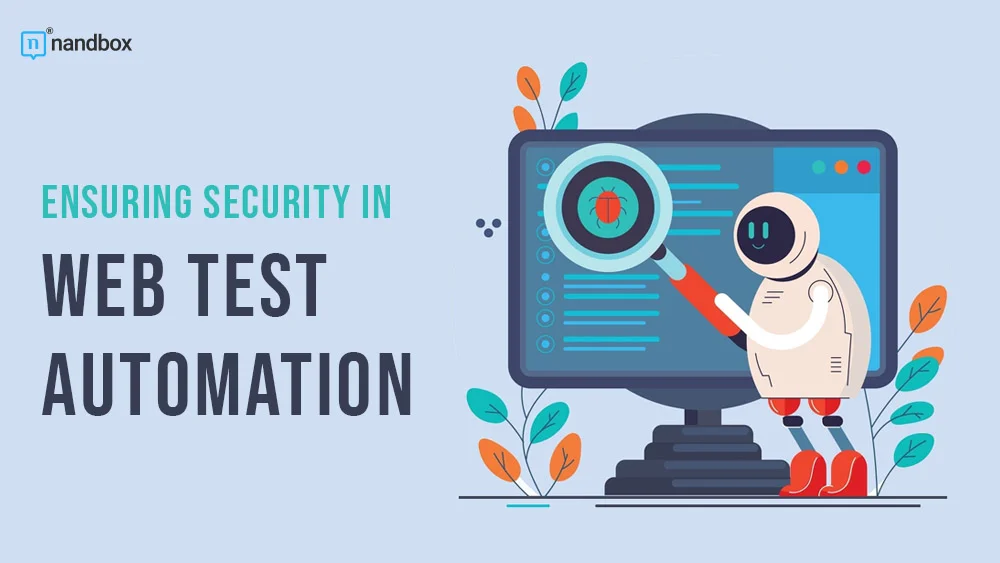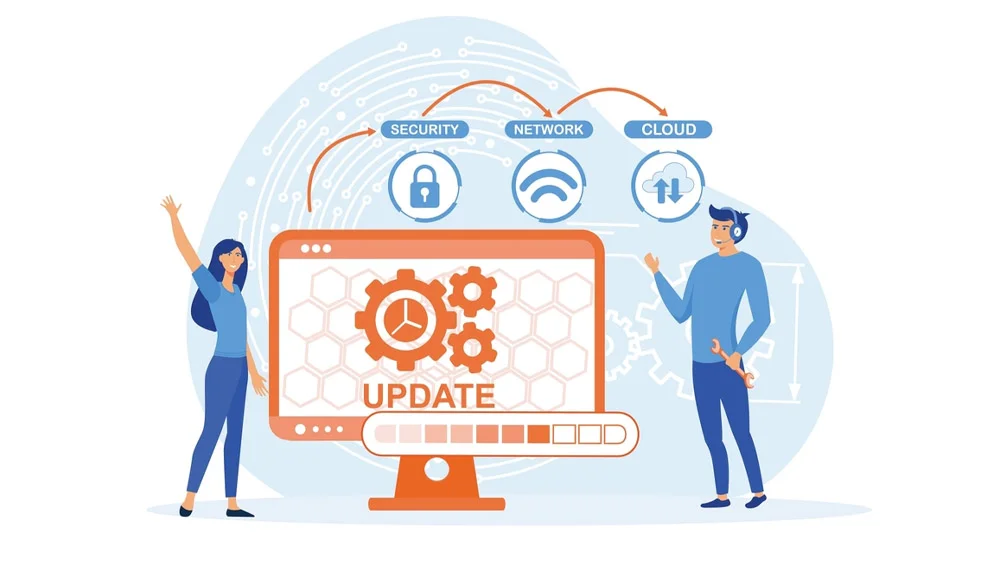Automated Web Application Security Testing: Best Practices and Considerations
The significance of automated web application security testing in web test automation services in the ever-changing world of web applications cannot be emphasized. It is becoming more and more important for enterprises to address any security vulnerabilities that may arise during automated testing techniques.
Data Security Measures
Data security is one of the top priorities when it comes to web test automation. Because test automation is such a complex field, it is often necessary to include real data sets, which include personally identifiable information (PII) and confidential company information. A key tactic in proactively reducing the inherent risks connected with possible exposure during the testing phase is the prudent application of data security measures. Such as sophisticated data masking techniques or the strategic integration of synthetic data. Organizations can ensure the confidentiality and integrity of sensitive data while maintaining the advantages of comprehensive testing techniques by implementing these preventative measures to strengthen the security posture of their web test automation operations.
Secure Coding Practices
When creating and maintaining automated test scripts, it is imperative to give secure coding standards first priority. It is possible to reduce the risk of unintentionally adding vulnerabilities by using static analysis, coding standards, and regular code reviews. Code reviews offer a cooperative framework for finding and fixing security flaws, encouraging a spirit of group accountability. By examining code structure, grammar, and dependencies without executing the code, static analysis tools are essential to automated vulnerability discovery. Following coding guidelines helps to discover potential security concerns and improves the readability and maintainability of code. By establishing a strong security posture for automated test scripts, this multimodal method guarantees dependability and integrity all the way through the software development life cycle.
Secure Test Environments
Testing must be successful in secure environments. Important elements of this security system include encryption, access controls, and network segmentation. Network isolation shields the production environment from potential vulnerabilities found during testing and stops unwanted access. By restricting user permissions, access restrictions improve accountability and lower the possibility of tampering. Sensitive data is further protected via encryption. Ongoing resilience against new threats is ensured by routine vulnerability assessments and security audits. Together, these procedures strengthen testing’s efficacy—including that of automated test scripts—while preserving the privacy and integrity of testing procedures and data.
Integration of Security Testing
A key component of reliable software development is the automation pipeline’s integration of security testing. In order to find and fix security flaws before they affect production, this proactive strategy uses specialized tools, penetration testing, and frequent vulnerability scans. Automated scans quickly identify vulnerabilities, while penetration testing tests the system’s resistance by simulating actual attacks. Expert instruments offer refined analyses of the codebase. In the end, this comprehensive strategy helps to create software systems that are more resilient and safe by fostering a security-conscious culture and guaranteeing early vulnerability discovery and remediation.
Authentication and Authorization Testing
Robust testing of authorization and authentication systems is essential for web test automation. Preventing unwanted access and building a robust security posture depend on accurate user role and permission implementation. Automated tests identify potential flaws and vulnerabilities by simulating authentication scenarios. Authorization tests also confirm that users have the right access according to their roles. Automating these tests on a regular basis strengthens web applications against possible attacks and improves ongoing security validation, all of which contribute to a reliable system.
Secure Handling of Credentials
Keeping credentials secure is essential to protecting important systems. It is essential to securely store sensitive data, such as passwords or API keys. To stop unwanted access, secure storage techniques like encrypted databases must be used. Extra security is provided by encryption methods, which render stored credentials unreadable even in the event that they are accessed. Strong authentication procedures and stringent access controls also improve security. Updating and switching up credentials on a regular basis is a proactive way to reduce risks. By putting these strategies into practice, the likelihood of unwanted access to vital systems is decreased and a comprehensive and robust cybersecurity strategy is created.
Regular Updates and Patch Management
Testing tools must be updated frequently in order to mitigate the risks associated with potential vulnerabilities in out-of-date tools and maintain security. In addition to sealing off security gaps, this proactive approach incorporates the most recent features and bug fixes, increasing overall resilience. Timely updates are essential for preventing possible exploits by malicious actors. To stay up to date on important updates, organizations should regularly check release notes, vendor announcements, and security advisories. They strengthen their testing environment, lower the chance of security breaches, and comply with cybersecurity best practices. All that for a strong and current testing infrastructure by instituting a routine for applying updates.
Fostering a Security-Conscious Culture
“To enhance cybersecurity, it’s crucial to cultivate a security-focused culture within development and testing teams. This involves training in secure coding, fostering awareness of security risks for early detection and mitigation, and promoting collaborative efforts in addressing security issues. Such a cooperative strategy aligns with industry standards for robust software systems and instills a shared responsibility for cybersecurity.”
To sum up, automated web application security testing and protecting web test automation necessitates a comprehensive approach covering a range of security aspects. It is imperative for organizations to give top priority to aspects like data security, secure coding practices, test environment establishment, and continuous security testing. With this all-encompassing approach, safeguarding sensitive data and proactively fixing vulnerabilities become crucial. Following these best practices strengthens businesses’ overall cybersecurity posture in addition to strengthening web automation testing company integrity. Organizations must remain vigilant and adapt as technology changes to ensure that their web test automation processes are secure from new threats. By doing this, they build a solid foundation for long-term, secure digital operations in addition to protecting sensitive data.







